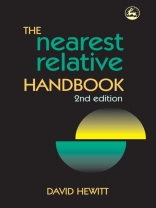When a person is subject to the Mental Health Act, many of his or her principal rights are taken away. It is the function of the nearest relative to compensate for that loss.
This fully updated second edition explains how the nearest relative is identified, and how in some cases he or she might be displaced. It also contains a wealth of new case examples and illustrative scenarios, providing a succinct discussion of each significant case and incorporating all the very latest changes to the Mental Health Act.
The Nearest Relative Handbook will be an invaluable aid to those who find themselves in a professional relationship with a nearest relative, to those who are or wish to be a nearest relative and to anyone needing to make sense of the relevant statutory provisions.
Tabla de materias
List of Abbreviations Used in this Book. Introduction. 1. The Recent History of the Nearest Relative. 2. The Nearest Relative of an Adult. 3. The Nearest Relative of some Minors. 4. Ceasing to be the Nearest Relative. 5. Admission and the Nearest Relative. 6. Discharge and the Nearest Relative. Appendix One. Statutory Extracts. Appendix Two. Regulations. Appendix Three. Specimen Document. Appendix Four. List of Legal Cases Cited. References. Subject index. Author index.
Sobre el autor
David Hewitt is a solicitor and a partner in Weightmans LLP. He was a member of the Mental Health Act Commission for nine years and now holds visiting fellowships at Northumbria University and Lincoln University. He is a President of Mental Health Review Tribunals and sits on the editorial board of The Journal of Mental Health Law. He appeared as a witness before the joint Parliamentary committee on the draft Mental Health Bill of 2004.












